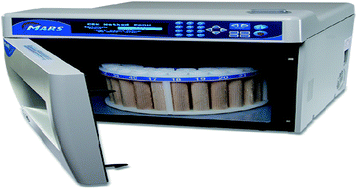There are a number of countries around the world that use groundwater that is rich in arsenic (As) to flood their rice fields. It is believed that this practice is responsible for the high levels of As found in rice, compared to other crops. The bioavailability and toxicity of As is determined by its speciation, therefore it is necessary to have an appropriate analytical tool to characterize As contaminated food. Pradeep Alava and Gijs Du Laing, along with their colleagues from Ghent University, Belgium, have been studying the sample preparation techniques used for assessing the levels of As in rice. They have looked at the affect of various methods on the speciation of the As removed from samples, including extraction, microwave extraction, and grinding.
This article will be free to access for 2 weeks, so click through here and take a look!
Extensive grinding and pressurized extraction with water are key points for effective and species preserving extraction of arsenic from rice
Pradeep Alava, Tom Van de Wiele, Filip Tack and Gijs Du Laing
Anal. Methods, 2012, Advance Article
DOI: 10.1039/C2AY25094B











